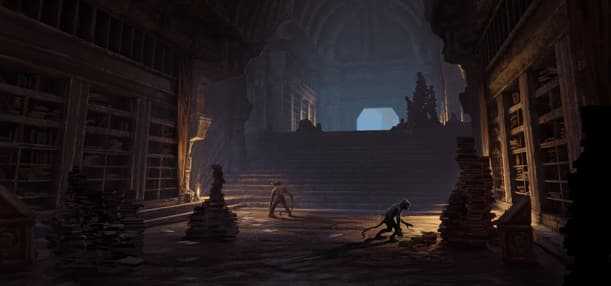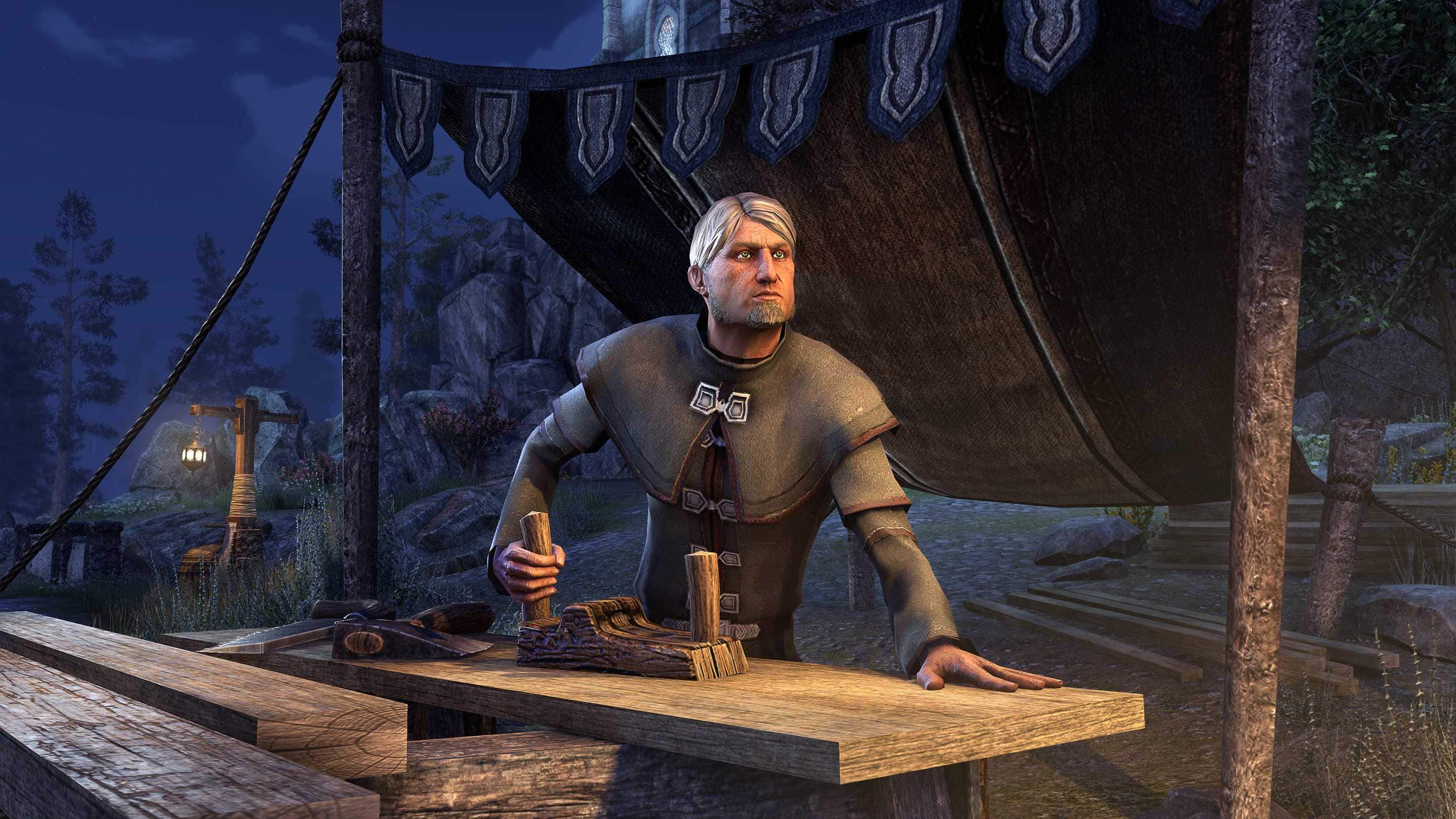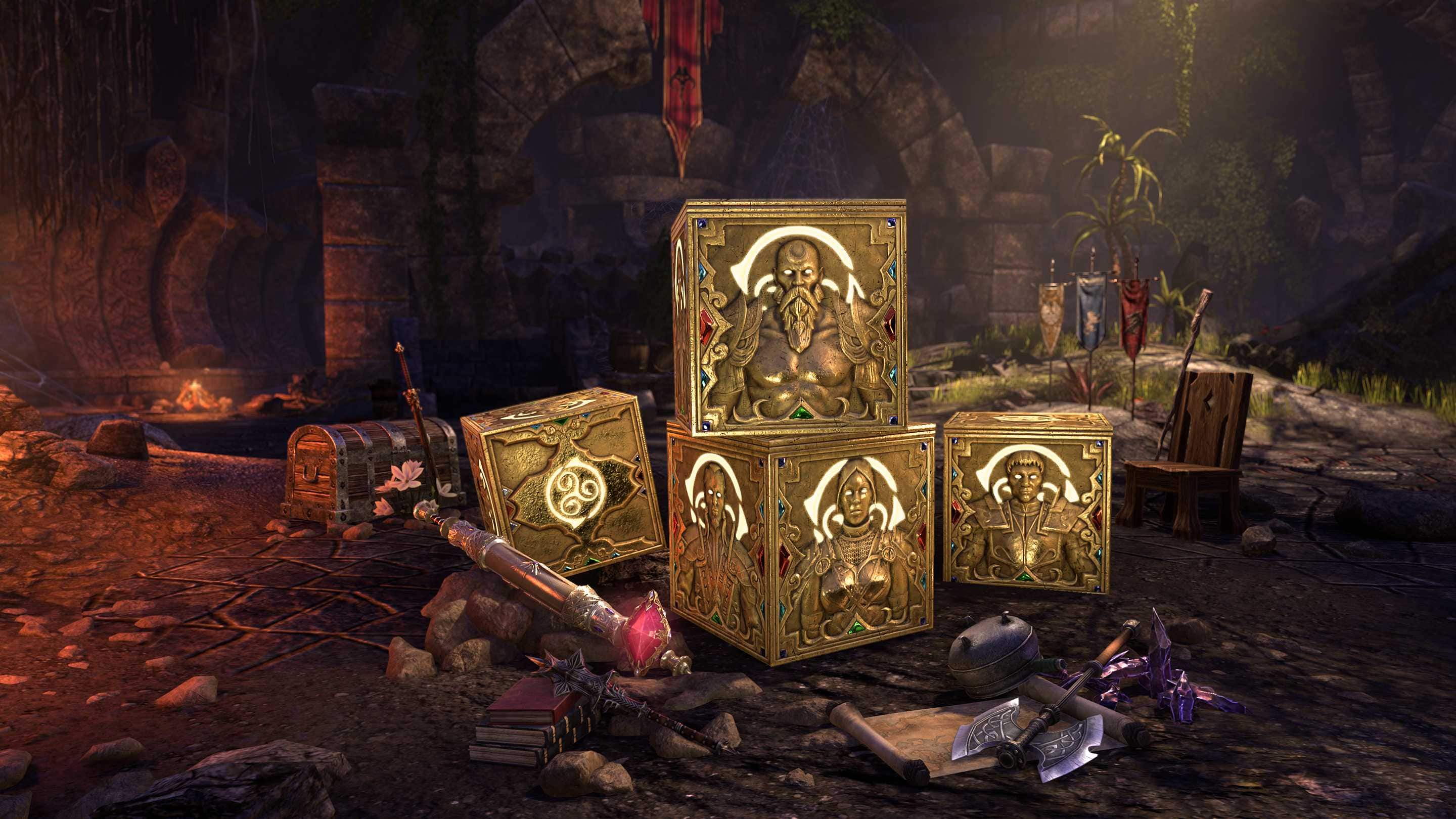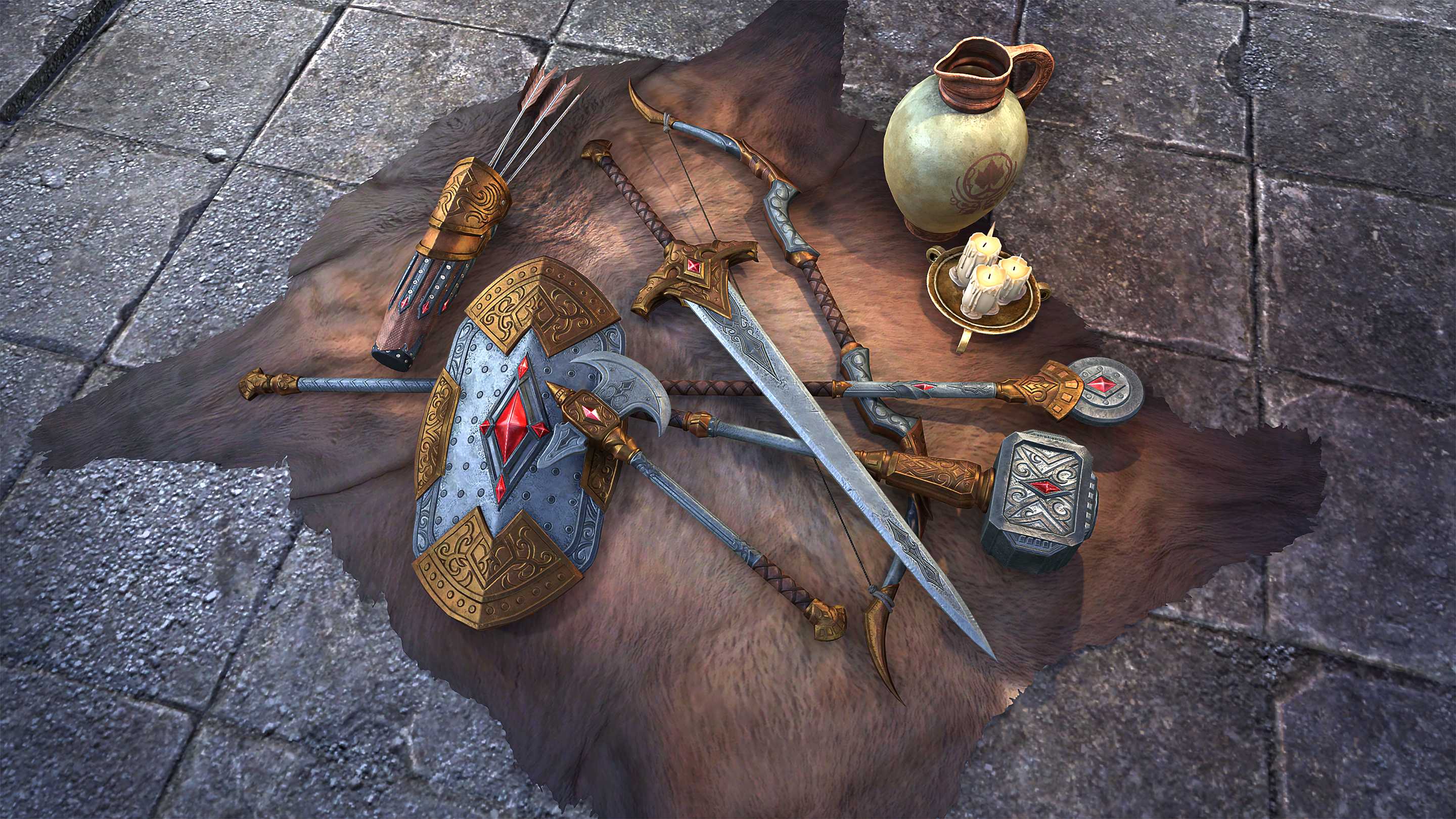

Kireth Vanos describes her lifelong pursuit of learning to craft in the Dwemer style.
Our delve into the archive today reveals a book by Kireth Vanos, talented smith and Dwemer researcher who has spent years of her life studying ancient texts and constructs in hopes of unlocking the smithing secrets of the vanished race.
In the next archive, High King Emeric himself leads us on an examination of the decline of the Second Empire. Send your questions on the subject for the Royal Majesty to community@elderscrollsonline.com.
Re-forging the Past
By Kireth Vanos
I’ll never forget the first time I saw the unmistakable hallmarks of Dwemer craftsmanship. Too small to even see the traveling merchant’s wares atop his table, my father lifted me up so I could admire the strange angles, geometric engravings, and the unusual luster of a mace and shield on display. I was captivated. Though it’s likely those first pieces I laid eyes on were reproductions, they were enough to stoke my curiosity for a lifetime.
I apprenticed under my father, a well-regarded smith, and tried again and again as my skills improved to replicate the Dwemer designs that so fascinated me. One of the major difficulties, of course, was not having much in the way of example or instruction—all I had to go on for ages were my memories. My father forbade me from searching for ruins on my own, though he did humor my passion by bringing me any book he could afford on the topic of the vanished race and their creations.
It wasn’t until I was old enough to strike out alone that I made any substantial progress. I soon discovered how right it was of my father to keep me away from Dwemer ruins in my youth. They are treacherous places even for experienced adventurers, which I was certainly not the first time I charged headfirst into one. I was a bit too confident, I’ll admit, and I never expected the spider construct that burst out of an opening in the wall as I walked by. I had no idea the ruins were still active!
I was inexperienced and untried in combat, and without my skill as a smith, I doubt I would be here to tell my story today. My armor protected me from several blows I could not deflect in time with my shield as two more spiders clanked out from the darkness, and my well-balanced mace seemed to swing itself right into them, sending tiny gears and showers of sparks flying. It was over before I knew it, and I realized that I stood among piles of still-hissing metal treasure.
Cramming everything that would fit into my pack—part of the carapace, a couple engraved legs, and an assortment of gears and springs—I carefully made my way back to the surface. The Eight smiled on me that day, because it wasn’t long before I was blinking in the sunlight, little worse for the wear than a few scratches and minor burns.
Back at the forge with my prizes, I worked day and night on a new mace. I fashioned it after one in an ancient text my father had found, using my hard-won scrap to augment the smithing process. It became apparent quickly that this was what I’d been missing the whole time! The product of that sleepless week has never been recognized as a reproduction by any scholar, smith, or relic-dealer.
Forging in the Dwemer style, as you can see, is not for the dabbler. Only a committed craftsman will have what it takes to seek out rare, ancient texts and obtain their own materials from the deadly constructs that lurk to this day in the ruins of that lost civilization. If you think you’re up to the task, I hope my story has inspired you—and if you’re not, then stay well away from those ruins!
Kireth Vanos answers your questions:
“Do you know the reasoning for the straight line down the middle of the facial mask on Dwemer helms? Was this merely an aesthetic design or does it serve some functional purpose as well?” – Solus Lighthawke, Dwemer Scholar-in-Training
Kireth Vanos says, “Bilateral, and even multilateral, symmetry is such a common element in Dwemer design that it’s often hard to know when it’s functional, when it’s stylistic, or even both. In most cultures, dualism symbolizes the dual, Anuic/Padomaic nature of the aurbis, but as the Deep Elves were said to have rejected the Divines, that seems unlikely to be the explanation in their case. Of course, drawing a line down the middle of a mortal’s face instantly makes that face more intimidating, so the explanation could be as simple as that.”
“Is the Dwarven Ore we find on the surface in Tamriel not actually the metal used in creating Dwemer armor, but instead a ‘fool's’ Dwarven ore mistaken for the metal the Dwarves used to create their legendary un-rusting armor, weapons, and other assorted metal things?” – ICEbweaka9
Kireth Vanos says, “Common so-called ‘Dwarven Ore’ is, in fact, given that name because of its resemblance to the metal forged by the long-lost Dwemer. As a metallurgist I can tell you that while Dwarven Ore is a tough substance indeed, it’s not nearly as durable as actual metal harvested from actual Dwemer devices. That’s why forging in the Dwemer style requires actual Dwemer metal as material.”
“Good Vanos, I wonder—what initially drove you to the study of Dwemer armor?” – Razum’dara, Wayward Khajiit Scholar
Kireth Vanos says, “Something about the simple, geometric elegance of Dwemer design spoke to my inner need for structure and organization. The Deep Elves might have been unholy heretics, but by the Eight, they understood the importance of doing a thing right.”










 FREE!
FREE!